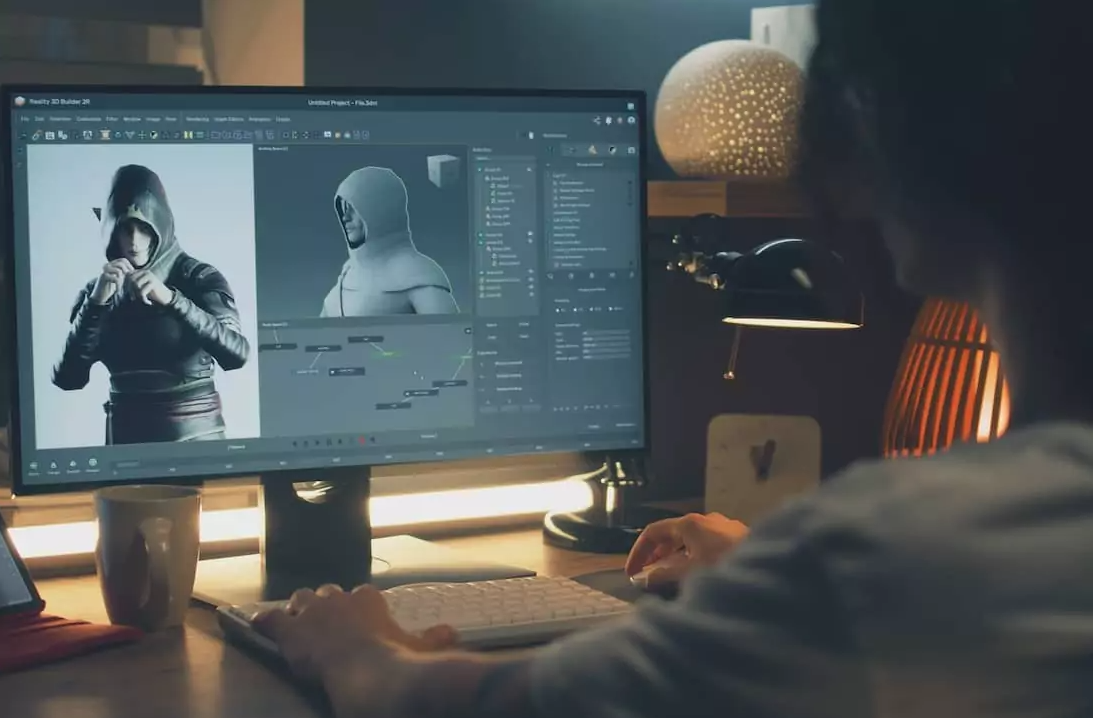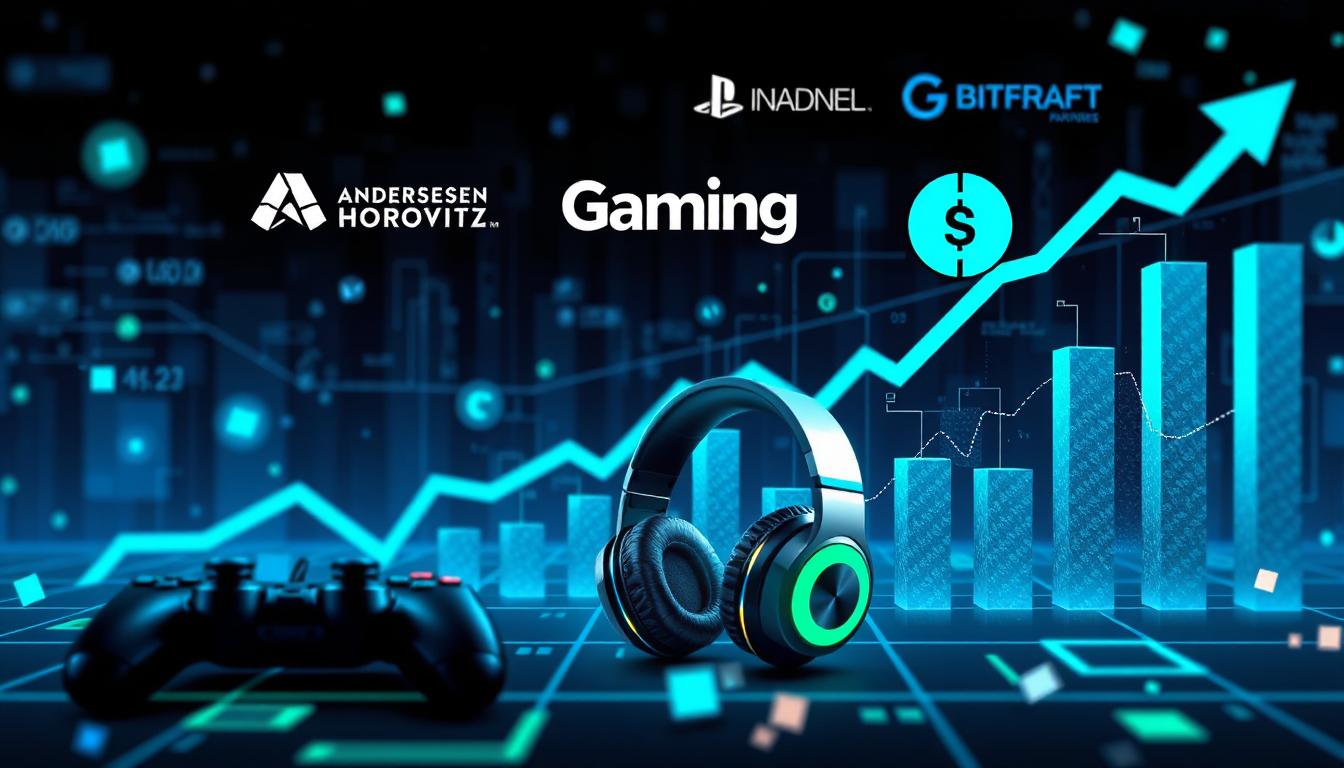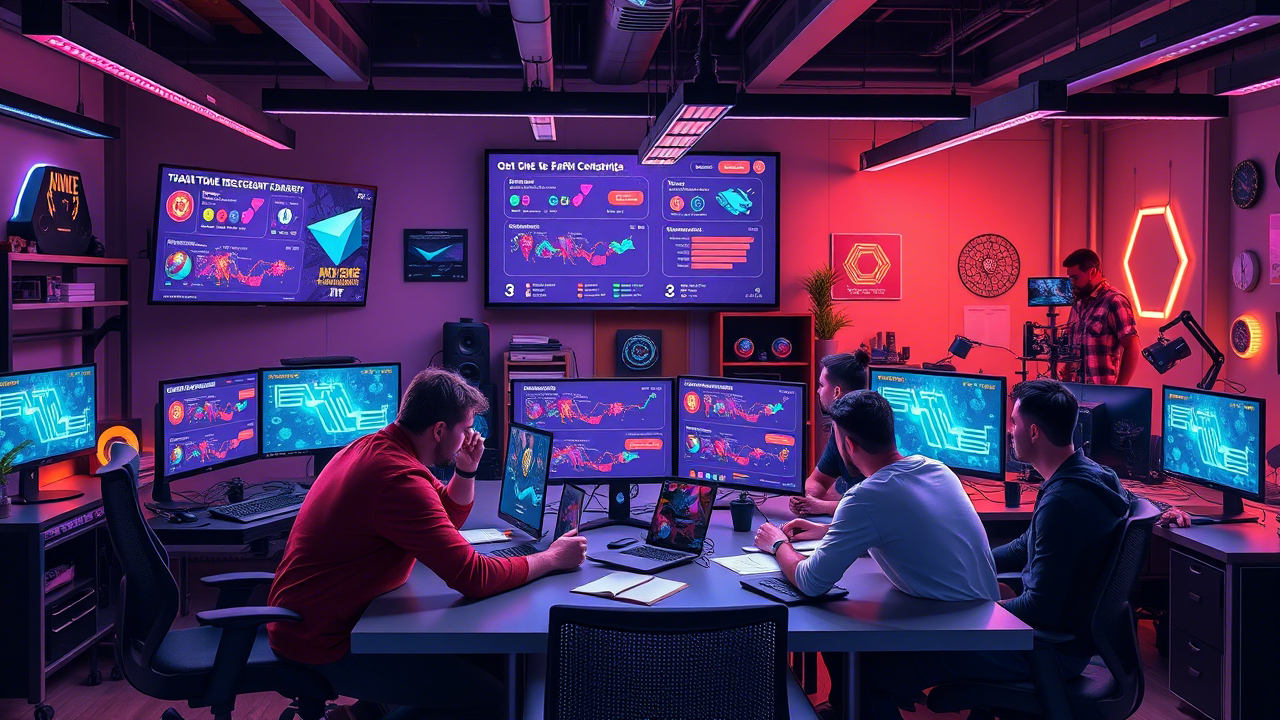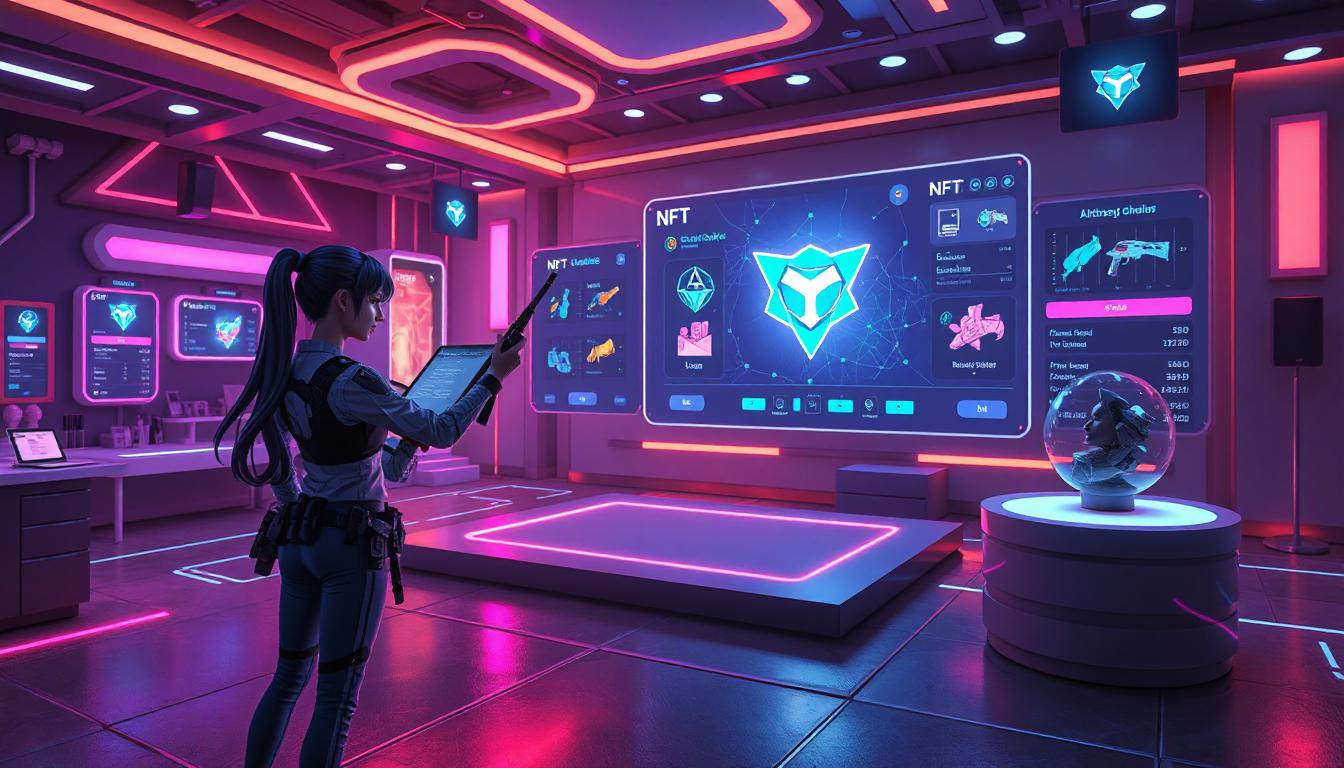Records always seem impossible till others touch them. Who could imagine if an indie game product sold 2 million copies before the indie game development studio Supergiant Games reached that by releasing the game Hades! Or imagine 100,000 reviews that mostly indicate a huge amount of game user satisfaction with Team Charry’s indie game design, the Hollow Knight. These unbelievable statistics appear as a light through the darkness to motivate others to move forward and acknowledge them. This article reviews the typical indie game development journey to inspire all newcomers on their way to countering obstacles and challenges.
An Introduction to Indie Game Development
Indie game development is mostly recognized by its small scale, low budget, small team, and poor design rather than extremely big game studios like Electronic Arts and Nintendo. However, it could not be a holistic definition of indie game development. The indie game ecosystem is not about poorness, it’s about being independent in various contexts of game development.
Indie Game Defenition
In the article “Indie Game Developers’ Intelligent Assistant: How AI is Being Used in Indie Game Development,” the indie game development concept was defined by eight characteristics, including financial and intellectual independence, a lower budget( rather than big publishers), creativity, inclusive culture and mindset, artistic experimentation, innovation, and small team building.
Hence, the road to indie game development mostly involves many blocks and obstacles that require risk-taking and creativity to tackle and move forward. Indie game development encompasses various fields, such as video games and mobile games.
To clarify indie game development more, it would be better to dive into the opposite side of indie games which is identified as mainstream game development. Finding the distinction between these two streams enhances the process of the indie game development concept.
Mainstream game development often is recognizable as a big pre-production scale, vast market, big production, and different phases of launching. These factors make mainstream activists more conservative!
In other words, mainstream game actors should go through common ways and pass the same exams to at least guarantee the return of enormous investments. They often use the same game technologies like graphic engines, normal game designs, etc. So, there is nothing new, except reputation.
This is truly against the characteristics of indie game development mentioned in the paragraphs above. Indie game developers find trying new methods and innovative approaches more convenient. Here are the top indie game developers who keep the indie game development flag flying.
The Necessity of Indie Game
As it has been pointed out, the main mission of indie game development is diversity, innovation, and creativity. All these elements are essential for every industry to explore new directions and they guarantee the richness of industries’ culture and evoke new voices and ideas. Let’s look at the necessity of indie games case by case:
Innovation and Creativity
It’s not just about game tech, it is also about the concepts and stories that are targeted to develop a game. Indie game developers often pursue unique and experimental game mechanics through risky ways that a mainstream game studio avoids due to the lot of expenses it might bring to them.
Diversity
Indie games mostly are open to conceptualizing, narrating, and designing diverse, trying things that mainstream game developers don’t like to take in their game projects. The diversity importance in the game has already been discussed in the blog post “What do We Talk About When We Talk About Inclusive Game Design?”! The advantages of inclusive game design include the opportunities to get more creativity, Touch on social realities, and Reach a wider range of audiences.
Accessibility
Indie game development is proof of the famous quote “Impossible is nothing” by Audrey Hepburn. In other words, this ecosystem makes game development more accessible with a lower budget and smaller team and encourages a wider range of voices and perspectives in the game industry.
Community Engagement
Indie game developers kill the ego and get a direct connection with their communities, more than mainstream developers due to their flexible structures. Sometimes big structures appear as an obstacle in front of mainstream developers to make a real relationship with their audiences. However, the immediate communications allow indie game developers to reach more obvious feedback and reflections from targeted audiences.
Market Alternatives
A dynamic industry always needs to generate alternatives with the aim of balance in the market. Indie games are the ones that do it properly in the game industry by offering various options for different tastes.
Experimentation
Experimental-oriented approaches play a key role among the elements that shape the concept of indie game development! Indie game developers always aim to push borders in a different context including art styles, storytelling, etc, without forcing to tolerate pressures from stakeholders and investors. This leads to unique and memorable gaming experiences.
Talent Development
It is not Ok to consider indie game development as a sandlot to raise the developers and transfer them to mainstream game studios! At the same time, no one can ignore the truth that indie game development introduces a lot of talented developers to the mainstream.
Many indie game developers serve the game industry by tapping the peaks. Looking at the top indie game developers clarifies the definition and importance of indie game development.
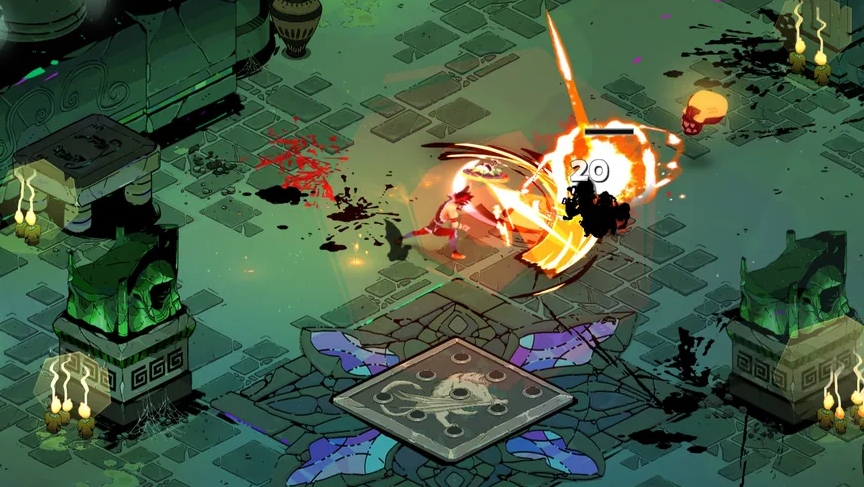
Top Indie Game Developers
Specific elements define top indie game developers like sales performance, awards and critical acclaim, Metacritic scores, community involvement, etc. Two top indie game developers are categorized based on these metrics and more.
Supergiant Games
Supergiant Games has established itself as a leading indie developer through its successful sales figures, critical acclaim, innovative design, and strong community engagement. These statistics and elements highlight how their unique approach to game development resonates with players and helps them stand out in a competitive industry.
Sales Performance
As of early 2023, the game Hades sold over 2 million copies since its release in 2020. It quickly became one of the best-selling titles on the Nintendo Switch and Steam. Also, the other production, Bation sold over 1 million copies within just a few months of its release in 2011. It remains one of the top-selling indie games. Furthermore, Transistor Released in 2014, sold over 1 million copies within its first year, showcasing its commercial success.
Critical Acclaim and Awards
Supergiant Games has received more than 100 awards and nominations across its titles, highlighting its impact on the gaming industry. For instance, the game Hades won a BAFTA Games Award for Best Game and was nominated for various Game of the Year awards from major publications and organizations. In addition, Transistor and Bastion, the Supergiant Games’ products, received accolades for their art direction, storytelling, and sound design, including **Best Indie Game** from several gaming outlets.
Metacritic Scores
The Hades Achieved a Metacritic score of 93 (PS5 version), indicating “Universal Acclaim.” It’s one of the highest-rated games of 2020. Bastion Holds a Metacritic score of 89, showcasing its critical success and positive reception. Also, Transistor Received a Metacritic score of 85 reinforcing Supergiant’s reputation for quality.
Player Engagement and Retention
The Hades has accumulated over 1 million hours played shortly after its release, indicating high player engagement. In addition, it currently has over 160,000 reviews on Steam, with 97% positive ratings, reflecting strong player satisfaction.
Community Involvement
Supergiant Games actively engages with its player base through social media, dev blogs, and community events. This involvement has fostered a loyal fanbase, evident in the success of their titles and their ability to attract and retain players across releases.
Innovation in Design and Storytelling
Supergiant Games is known for its cohesive design philosophy, with each title featuring unique art styles, engaging gameplay mechanics, and rich narratives:
Hades features a dynamic narrative system where players can interact with characters, leading to over 80,000 lines of dialogue contributed by the voice actors, enhancing player immersion.
The art and sound design in all their games have won numerous awards and accolades, contributing significantly to their appeal. For example, Hades’ art director won the Best Art Direction award at The Game Awards 2020.
Crowdfunding Success
Instead of crowdfunding, Supergiant has thrived on a traditional publishing approach supported by early sales. However, their games have gained sufficient traction to warrant consideration for further expansion and successful updates, such as Hades receiving additional downloadable content (DLC) following its launch due to demand.
Team Cherry
Team Cherry’s achievements, reflected in their sales figures, critical acclaim, community engagement, and innovative design, solidify their status as a leading indie game developer. The success of Hollow Knight serves as a benchmark for quality in the indie gaming market.
Sales Performance
Hollow Knight has sold over 3 million copies across all platforms as of early 2023. This remarkable sales figure highlights its popularity and impact in the indie game market. The game consistently ranks among the best-selling titles on platforms like Steam, especially during sales events.
Critical Acclaim and Awards
The Hollow Knight has won several awards and nominations, including IGN’s Best Indie Game (2017), Golden Joystick Awards (2018), and The Game Awards (2017). The game is often listed among the top indie games of all time by various gaming publications and aggregator sites.
Metacritic Scores
Hollow Knight holds a Metacritic score of 90 for the PC version, indicating “Universal Acclaim.”. The PS4 version also scored 90, while the Switch version has a similar score, reinforcing its reputation across platforms.
Player Engagement and Retention
Hollow Knight has received over 100,000 user reviews on Steam, with 96% of users giving it a positive rating. This high percentage is indicative of strong player satisfaction and engagement. The game has an impressive average playtime of around 30 hours, with many players reporting even longer completion times due to exploration and side quests.
Community Support and Modding
The game has a dedicated community that actively engages in fan art, discussions, and content sharing. Platforms like Reddit have active communities with thousands of subscribers discussing the game’s lore and mechanics. There are numerous mods created by the community that enhance gameplay or add new features, indicating a strong grassroots following that contributes to the longevity of the game.
Innovation in Game Design
Team Cherry utilized a hand-drawn art style and fluid animations, which have been influential in shaping the visual standards for indie games. Their artistic direction has received accolades for its unique aesthetic. The game’s intricate level design, coupled with a rich lore embedded in the environment rather than through heavy exposition, has contributed to a deeply immersive experience appreciated by players.
Sequels and Expansions
Following the success of Hollow Knight, Team Cherry announced the sequel, Hollow Knight: Silksong, which created significant anticipation and excitement within the community. The original game received substantial free content updates, including the “Godmaster” and “Lifeblood” updates, which expanded the game’s features and gameplay, further enhancing player engagement.
Financial Transparency
Team Cherry has shared insights into their financial success modeling from the revenues of Hollow Knight, emphasizing how strategic pricing and updates can optimize profitability, especially as an indie developer.
There are many indie games like Weeny Wise, the Negative Five Venture portfolios’ production, that try to meet the indie game development mission properly. Some of them reach success, and others play their roles. However, all, almost take the same journey. Let’s look at an indie game development process.
A Successful Indie Game Development Journey
The indie game development takes 7 stops to shape an indie game project properly. It starts from pre-production phase to the post-launch phase. To get familiar with that journey, this article aims to examine each phase in detail.
1. Pre-Production Phase
To begin an indie game development journey, it is needed to specify the genre, and core gameplay mechanics conceptually. All these steps are categorized in the pre-production phase.
- Brainstorming
Brainstorming is a way to flow creativity, and let the ideas appear improvised without judging them. Just count on your excitement: which game do you like to play? What excites you? Feel free and write it all somewhere. Think of unique elements to add to your ideas.
- Recognizing game genre
Video games often are classified visually and narratively into several known categories like action, adventure, fighting, platform, etc. Specifying the game genre directs your game tone of voice. When developers become aware of the genre, they start to realize core gameplay mechanics.
- Identifying core gameplay mechanics
After specifying the game style, developers identify basic actions and interactions that their users are gonna engage with. The core gameplay mechanics might be running, shooting, hiding, etc. These mechanics must excite and entertain targeted game users.
A good beginning makes a good ending! Every developer needs to put the first brick properly. So, it is necessary to take designing game concepts step by step truly. The next step is related to market research.
2. Market Research
No one can play well without understanding the pitch! In the case of indie game development, these all are related to current market trends, and market opportunities! It doesn’t mean developers should fall into a reputation cycle. They have to recognize niches and or a unique twist to figure out the project’s place in the market. Indie game developers need to answer these questions:
- What are the market trends?
- Who is the target audience?
- What is the weakness of the competitor?
- What is the strength of the competitor?
- How do they design a Game Design Document(GDD)?
Game Design Documents(GDD)
Game Design Document(GDD) is the first draft of the game that is aimed to put in an indie game development process. With an appropriate GDD including story, characters, mechanics, art style, sound design, etc. developing team ensures that they move and design in the right direction. Let’s have a look at the GDD’s elements:
- Storyline
- Character
- Setting
- Sound design
- Technical specification
After designing the GDD, the most exciting stage is coming, the step in which the baby is gradually born.
3. Production Phase
This is the time to embody all thoughts, ideas, and plots about the projects on a development team scale. The process often starts with prototyping and ends with sound design. Let’s briefly look at each step.
1. Prototyping
The first step of each indie game development production phase is shaping a simple draft of the game, without any specific design. The draft lets a development team focus on core gameplay mechanics. It includes mechanical testing, In this step, all mechanics are tested again and again to edit and improve the game.
2 . Development Tools and Technologies
- Choosing the Right Game Engine
Choosing one among the game engines like Unity, Unreal Engine, and Godot would be a strategic choice due to the programming language dependency on these engines. For example, using Unity as a game engine mostly means developers should pick C# as the right language. If the development team thinks of Unreal engine, they should choose their programming language among the ++C and Blueprints. Also, if the game engine is Godot, the right choice would be GDscript or Visualscript.
For instance, Supergiant Games, one of those indie game studios that was mentioned above, used the Unreal Engine and C++ programming language to develop the game Hades, and Team Cherry, the other top indie game studio that was pointed out in this article, developed the game Hollow Knight using Unity game engine and C# programming language.
It is really important to choose an engine and programming language that is fit to team skills and the project’s necessity.
- Asset Creation Tools
The next significant step would be graphics, animations, and sound asset preparations. Many tools and people are engaged with asset creation like Blender and Photoshops for graphics, Ableton and FL studio in the sound design process, Spine for animations, and absolutely a great indie game development team to use all these stuff create.
- Roles and Responsibilities
As mentioned, an indie game team is always defined on a small but sufficient scale. You will be surprised if you figure out how widely professionals are engaged to shape an indie game. Just have a look at the list below:
- Programmers
- Artists
- Sound Designers
- Designers
- Producers
A great strategy to build a great collaboration is one of those crucial steps that each game studio should take. There are some efficient tools like Trello, and Discord to shape good Communication Strategies.
3. Programming and Scripting
Another fundamental stage of developing an indie game is programming and scripting, including implementing the game mechanics, AI behavior, and user interface, as well as implementing physics and collision detection. Programmers usually start with the main characters and core gameplay mechanics and extend it to other characters and mechanics.
4. Art and Animation
The art and animation stage, here, is related to design assets, characters and settings, and animation techniques. Many artists and art tools participate in this stage to create:
- 2D/3D Assets
- Character and Environment
- Animation Techniques
The next stage would be designing the sounds and music.
5. Sound Design
Sound effects and music play a significant role in developing an immersive game by evoking excitement and emotions. These are two stages. The first one is effects and music design through the tools mentioned above based on the game genre and storyline. The second one is integrating sound into the game by adding it to the game engine and matching it to the right moments.
4. Pre-Launch Phase
The pre-launch phase includes finalizing game mechanics, testing for bugs, creating marketing strategies, and building hype through trailers or demos. It also involves gathering feedback from playtests, optimizing performance, and preparing for the launch on platforms, ensuring everything is polished before the official release.
The testing phase is another crucial stage of indie game development to ensure the quality and usability of the product work well. Testing is usually established in two steps. Indie game studios begin the phase with all team members to find out the probable problems and bugs to tackle. In the next step, they examine their product with limited targeted audiences to get influential feedback about user experience.
5. Launch Phase
The launch phase involves releasing the game to the public, managing distribution on platforms, and promoting the launch through social media, press releases, and streaming. If you are interested in game marketing, you can check the article“ Game Marketing Strategy: The Marketing Transformation in the Game Industry”. Developers monitor player feedback, address any immediate issues, and engage with the community to enhance visibility and foster player relationships post-launch.
6. Post-Launch Phase
The post-launch phase in indie game development focuses on supporting players through updates, bug fixes, and additional content. Developers analyze player feedback for improvements, monitor community engagement, and implement marketing strategies to sustain interest. Here is an article “Post-launch game marketing: Let metrics lead to success” which discusses the way of analyzing the feedback. This phase aims to build a loyal player base and ensure the game’s long-term success.
The standard game development journey ensures developers are on the right line to meet indie games’ mission, including innovation and creativity, diversity, accessibility, market alternatives, etc. or not. But always some secrets make differences between chef recipes and the normal ones that normal people go for. Do you know any specific secret that leads an indie game development project to touch the top? Please write to us in the comments.
Q&A
1. How do indie game projects get to the top?
Innovation, engaging storytelling, and community support guarantee that indie game development rising! If you look at indie games like Hades, you will come to realize how unique art style makes them distinguish. But they are not all reasons behind the game studio’s success. In other words, they need to work on effective marketing strategy and presence. You can truly find out that, nowadays, online appearance and social media visibility gradually become crucial to each presence strategy. If you are eager to know more about the social media role, please read the article “An Introduction to Leveraging Influencer Game Marketing”.
2. What metrics determine the top indie game studios’ products?
Top indie game studios’ products are often estimated by Sales Performance, Player Engagement and Retention, Crowdfunding Success, positive reviews and high ratings, and awards they won.
Sources: Indie Game Development Process, A Journey into Indie Game Development

